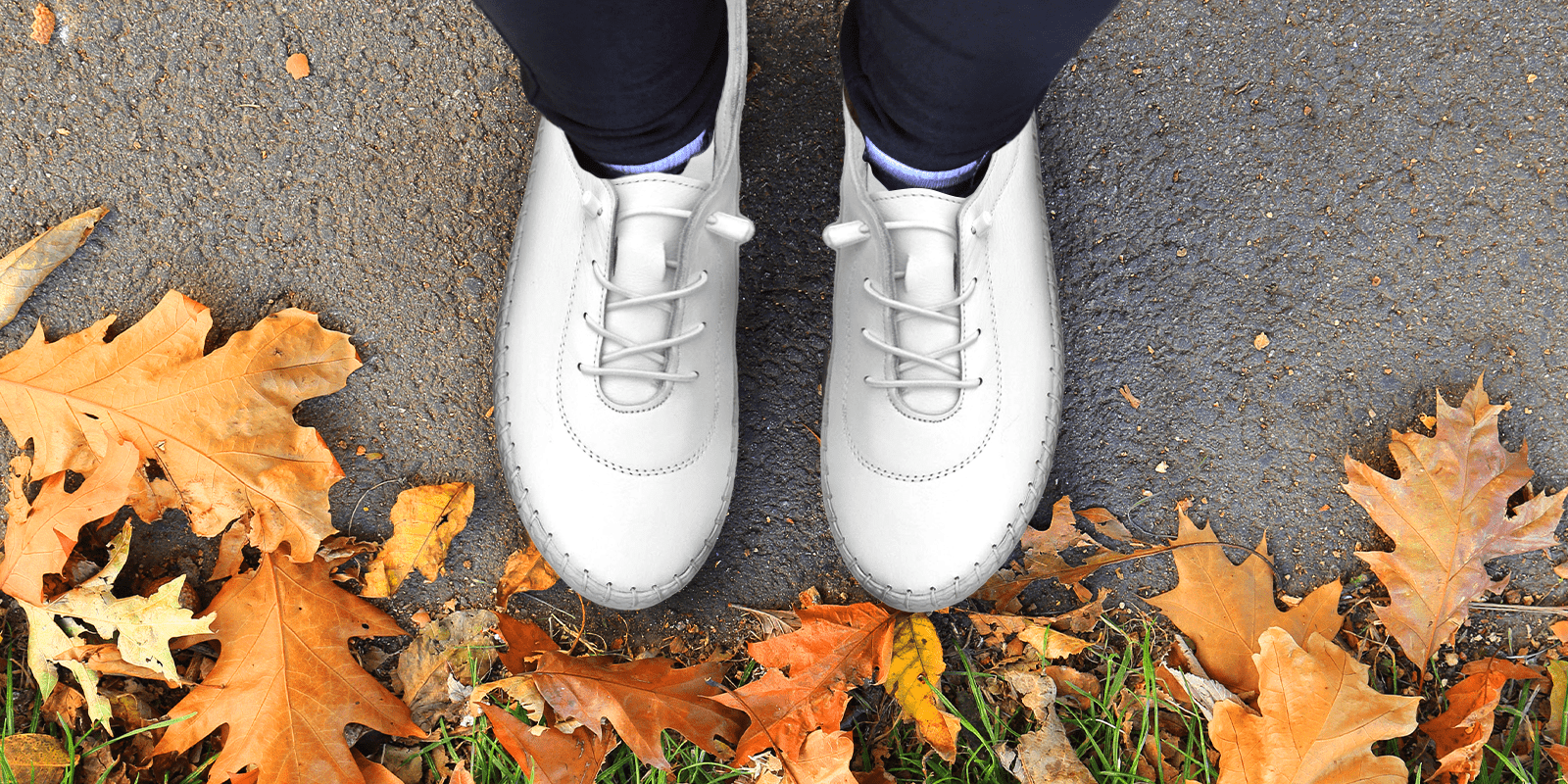In a world where fashion often triumphs over comfort, finding shoes that offer both can feel like a quest for the Holy Grail. This challenge becomes even more pronounced for special groups like pregnant women, who need footwear that can accommodate their changing bodies while still looking stylish. Interestingly, some brands, such as "Your Shoes" by El Kosh, have been quietly mastering this art, creating shoes that offer a sophisticated look without compromising on comfort.
What Should I Wear on My Feet When Standing All Day?
Standing all day is a common aspect of many people’s lives, whether they are professionals working in a retail or hospitality setting, teachers, healthcare workers, or homemakers managing daily chores. This prolonged standing can take a toll on your feet, leading to discomfort, fatigue, and even long-term foot problems. Choosing the right footwear is not just a matter of comfort; it's a health priority.
Essential Features for All-Day Standing Shoes
Arch Support and Cushioning:
The foundation of a good shoe for standing all day lies in its arch support and cushioning. Proper arch support helps distribute weight evenly across your feet, reducing pressure on any one area. Cushioning, especially in the heel and ball of the foot, absorbs the shock with each step, lessening the impact on your joints.
Contoured Footbed:
A contoured footbed aligns closely with the natural shape of your foot. This design can significantly improve comfort levels, especially when you need to stand for hours. It helps in maintaining the correct posture and alignment, thus reducing the strain on your feet, ankles, and lower back.
Ample Toe Room:
Shoes with a spacious toe box allow your toes to spread naturally. This is not just a matter of comfort; it's about preventing issues like bunions, hammertoes, and blisters. Shoes that cramp your toes can lead to painful conditions over time.
Breathable Materials:
Feet tend to swell and sweat during long periods of standing. Footwear made from breathable materials, such as natural leather or advanced mesh fabrics, can help in keeping your feet dry and comfortable. This is crucial for maintaining foot hygiene and preventing fungal infections.
Heel Height Consideration:
While flat shoes may seem like the logical choice for comfort, a slight heel (about 1 to 2 inches) can actually be more beneficial. It can help reduce strain on the Achilles tendon and improve posture. However, high heels are not advisable as they shift your body weight to the balls of your feet, leading to increased discomfort and potential foot problems.
Non-Slip Soles:
For those working in environments where spills are common, like kitchens or hospitals, non-slip soles are a safety necessity. They provide traction and help prevent falls, which is an important consideration alongside comfort.
Additional Considerations
Personal Foot Shape and Needs:
Everyone's feet are different, and what works for one person may not work for another. Consider your foot shape – whether you have high arches, flat feet, or wide feet. Some may need additional arch support, while others might benefit from extra cushioning.
Adapting to Changes in Foot Size:
Be aware that feet can change size over time, especially under conditions of regular long-standing. It's advisable to have your feet measured periodically and to choose shoes that can accommodate these changes.
Quality Over Aesthetics:
While style is a consideration, the quality and construction of the shoe should be the priority. Durable materials and solid construction ensure that the shoes will support your feet over time.
What are Comfy Shoes to Walk in?
Walking is an activity that most of us engage in daily, yet the importance of wearing the right shoes is often overlooked. Whether you're an urban explorer, a nature trail enthusiast, or simply someone who prefers to walk to nearby destinations, the comfort of your footwear is paramount. In this section, we delve deep into what makes a shoe comfortable for walking, touching on various aspects from material to design, and how to choose the right pair for your needs.
The Anatomy of a Comfortable Walking Shoe
- Cushioning and Support:
The first and foremost attribute of a comfortable walking shoe is its cushioning. Adequate cushioning underfoot provides shock absorption with each step, reducing the impact on your joints. Look for shoes with a memory foam footbed or gel padding. Equally important is arch support. Proper arch support in a shoe can alleviate common foot pain and prevent issues like plantar fasciitis.
- Flexibility and Stability:
A good walking shoe must strike a balance between flexibility and stability. The front of the shoe should flex easily, allowing your foot to roll through the step, but it should also provide enough stability to protect and support your foot as you walk. This combination ensures comfort and reduces the risk of injury.
- Breathable Materials:
Walking can increase foot perspiration, so it's crucial to have shoes made from breathable materials. This not only improves comfort but also helps in maintaining foot hygiene. Materials like natural leather, canvas, and certain synthetics designed for breathability are great choices.
- Fit and Roominess:
A comfortable walking shoe should have enough room to accommodate natural foot expansion throughout the day. A cramped toe box can lead to issues like blisters, calluses, and toe pain. Always ensure there's a thumb's width of space between your longest toe and the end of the shoe.
Selecting the Right Shoes for Different Walking Environments
- Urban Walking:
For those who walk mainly in urban settings, a combination of style and comfort is key. Lightweight sneakers or casual loafers with good cushioning and support work well. These shoes blend in with urban attire and provide the comfort needed for pavement pounding.
- Trail Walking:
If you're more into walking in natural settings, a shoe with good traction and more robust support is essential. Trail walking shoes are designed with thicker soles, more aggressive tread patterns, and additional ankle support to handle uneven terrains.
- Walking in Varying Weather Conditions:
Consider the weather conditions in your area. Waterproof materials are a boon in rainy areas, while more breathable, lighter shoes are ideal for hot climates. Some brands offer seasonal variations that cater to these specific needs.
Long-Term Benefits of Choosing the Right Walking Shoes
Investing in a pair of comfortable walking shoes is not just about immediate comfort. It’s about protecting your foot health in the long run. Proper footwear can prevent a range of foot and joint problems and can also improve your posture and walking gait. This is especially important for those who walk extensively or have pre-existing foot conditions.
Which Shoe Brand is the Most Comfortable?
While many brands claim to offer comfort, only a few truly deliver. The most comfortable shoe brands usually have a few things in common: quality materials, ergonomic design, and a focus on foot health. Brands like "Your Shoes" by El Kosh, with their handcrafted approach, often provide that extra level of comfort.
Comfortable shoe brands prioritize features like shock-absorbing soles, supportive insoles, and flexible construction. They often offer a range of widths to accommodate different foot shapes and sizes, ensuring a snug yet comfortable fit.
Striding Towards a Future of Comfort and Style
The pursuit of shoes that offer both comfort and style is not just about fashion or ease; it's about finding a balance that works for your lifestyle, whether you're spending long hours on your feet, walking around town, or adapting to changes during pregnancy. Brands that understand this balance, like "Your Shoes" by El Kosh, are leading the way in providing footwear that meets these diverse needs.



